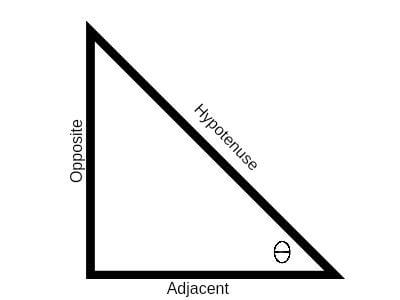How Do You Simplify The Expression  ? ?
For all conceivable values of the variables inside their respective domains, trigonometric identities are equations using trigonometric functions that are true. These identities are derived from the geometric relationships and properties of right triangles, circles, and periodic functions. In this article, we will learn one such trigonometric identity by simplifying  . .
What are Trigonometric Ratios
Trigonometric ratios are mathematical functions that relate the angles of a right triangle to the ratios of the lengths of its sides. The sine, cosine, tangent, cosecant, secant, and cotangent are the six fundamental trigonometric ratios. These ratios are often abbreviated as sin, cos, tan, csc, sec, and cot, respectively.

The tangent function is denoted as "Tan" and is defined as follows:

The cotangent function is denoted as "Cot" and is defined as follows:

The sine function is denoted as "Sin" and is defined as follows:

The cosine function is denoted as "Cos" and is defined as follows:

The secant function is denoted as "Sec" and is defined as follows:

The cosecant function is denoted as "Cosec" and is defined as follows:

Here, theta represents the angle, and the opposite and adjacent sides refer to the sides of the right triangle relative to the angle.
What is 
Mathematically,  can can also be written as can can also be written as 

This identity provides a way to express the tangent of an angle in terms of its cotangent. It helps simplify trigonometric expressions by replacing the tangent of an angle with the cotangent of the angle.
Explanation
To prove that  is equal to Cot x, we can start with the left side of the equation and the trigonometric ratio can be used to simplify the given expression. until we arrive at the right side. Here's a step-by-step explanation: is equal to Cot x, we can start with the left side of the equation and the trigonometric ratio can be used to simplify the given expression. until we arrive at the right side. Here's a step-by-step explanation:
Step 1: Step 1: Begin by focusing on the left side of the equation:

Step 2: Use the identity  to rewrite the denominator: to rewrite the denominator:

Step 3: Rearrange the expression and write Cos x in place of

Step 4: Cos x/sin x can be written as cot x according to the trigonometric ratio.

Thus, we can see that  by stepwise manipulation of the expression using our knowledge of trigonometric ratios. by stepwise manipulation of the expression using our knowledge of trigonometric ratios.
Uses of Trigonometric Identities
The trigonometric identities are immensely useful in trigonometry, calculus, and physics.
- They can be used to solve trigonometric equations by transforming them into simpler forms. By substituting
 , equations can be rewritten in terms without denominator for easier solving. , equations can be rewritten in terms without denominator for easier solving.
- Trigonometric identities aids in simplifying complex trigonometric expressions involving multiple angles. Repeatedly applying the trigonometric identities can reduce the number of angles and terms in an expression, enhancing clarity and facilitating further analysis.
- In calculus, trigonometric identities allow for the transformation of trigonometric functions into simpler forms. This simplification enables the application of integration and differentiation rules, helping to solve differential equations, evaluate integrals, and derive mathematical models in physics and engineering.
- Geometrically, the trigonometric identities help analyze angles and their relationships within shapes and figures. It allows for relating angles to their double angles, enabling exploration of symmetry, congruence, and similarity in geometric configurations.
- Trigonometric identities assist in solving problems involving angles in triangles, quadrilaterals, and other polygons.
- In physics, trigonometric identities are extensively used in wave mechanics, oscillations, and vibrations. It helps describe the behavior of waves, such as light and sound, by relating the angles of incidence and reflection.
- Trigonometric identities also play a crucial role in analyzing the phase difference between waves and determining interference patterns.
Conclusion
 is a fundamental trigonometric identity that relates the tangent of an angle to the cotangent of the angle. It serves as a powerful tool in trigonometry, calculus, and physics, facilitating the simplification of expressions, solving equations, and analyzing geometric and wave-related problems. Its versatility and wide range of applications make it an essential concept for anyone studying or working with trigonometry and its related fields. is a fundamental trigonometric identity that relates the tangent of an angle to the cotangent of the angle. It serves as a powerful tool in trigonometry, calculus, and physics, facilitating the simplification of expressions, solving equations, and analyzing geometric and wave-related problems. Its versatility and wide range of applications make it an essential concept for anyone studying or working with trigonometry and its related fields.
|
 For Videos Join Our Youtube Channel: Join Now
For Videos Join Our Youtube Channel: Join Now





